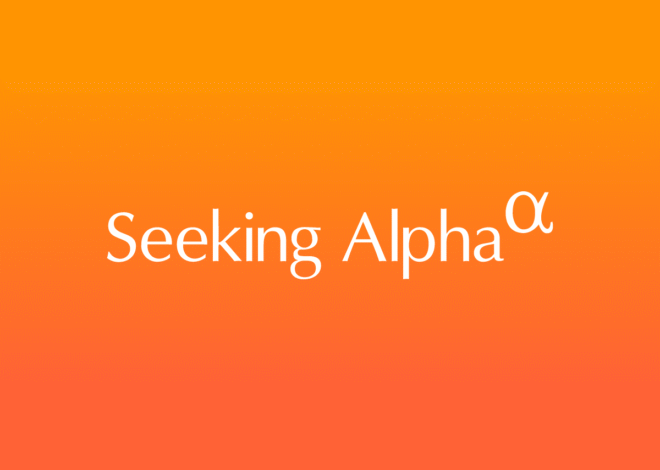
NZS Capital Q3 2025 Shareholder Letter
Pawel Kacperek/iStock via Getty Images
Dear Investors and Friends,
The NZS Growth Equity strategy (“strategy” or “portfolio”) had a gross return of +4.09% and net return of +3.93% for the third quarter as compared to +7.60% for the Morningstar Global Target Market Exposure Index (the “Index”) over the same period. Year-to-date, the strategy has generated a gross return of +20.18% and a net return of +19.60%, versus +18.26% for the Index.
*Since inception: January 1, 2020; returns as of September 30, 2025.
Performance Review
The rally in equity markets that began in the second quarter of 2025 continued into the third quarter. The strategy had positive returns but failed to keep up with the index.
In the quarter, Information Technology, Communication Services, and Industrials contributed the most to absolute returns. In particular, Alphabet’s (GOOG)(GOOGL) multiple re-rated higher after a positive ruling in the federal antitrust case against the company. Alphabet also benefited from the market’s growing appreciation of their strong position in AI, including their internally developed TPU processors and the potential for Gemini to power other AI agents. Lam Research (LRCX) and ASML Holding (ASML) benefited from increased enthusiasm around memory spending tied to AI and further confidence in Intel’s (INTC) ability to sustain CapEx following several fundraising announcements. Taiwan Semiconductor (TSM) and United Rentals (URI) rounded out the top five contributors in the quarter.
Financials, Health Care, and Consumer Discretionary detracted the most from the portfolio’s absolute returns. Constellation Software’s (OTCPK:CNSWF) underperformance in the quarter was partially due to founder Mark Leonard unexpectedly stepping down from his position as CEO due to health reasons. Fiserv’s (FI) multiple took another hit after the company reduced their organic growth outlook for the year, citing macro conditions and some delays in new product uptake and customer implementations. Roper (ROP), Chipotle (CMG), and American Tower (AMT) were also among the top-five detractors.
For the year-to-date period ending September 30th, the top-five absolute contributors to returns were Amphenol (APH), Lam Research, Alphabet, Taiwan Semiconductor, and ASML Holding. The top-five absolute detractors from year-to-date returns were Fiserv, Chipotle, Danaher (DHR), Atlassian (TEAM), and Constellation Software.
Portfolio Positioning
Given the changing opportunity set, name turnover was elevated in the quarter. Workday was added back to the portfolio as a resilient position, Gartner was added as an optionality position, and material additions were made to Constellation Software and Roper, as we believe the “AI disruption” narratives surrounding these businesses have likely been overplayed. New optionality positions were also initiated in Synopsys (SNPS), Monolithic Power (MPWR), ServiceNow (NOW), Figma (FIG), and monday.com (MNDY). We exited NVIDIA (NVDA), an investment held in the portfolio since inception, late in the quarter in favor of other names within the AI ecosystem (see “Widening range of outcomes” below). Likewise, Microchip (MCHP), Autodesk (ADSK), CyberArk (CYBR), ON Semiconductor (ON), and Thor (THO) were sold from the portfolio.
Exiting the third quarter, the strategy’s resilient weight was ~59%, up from ~57% at the end of the second quarter. Despite strength in IT, the portfolio’s IT overweight declined modestly in the quarter due to active portfolio decisions. We remain underweight Consumer, Financials, and Energy.
Widening range of outcomes
Technological progress is perhaps best imagined as a series of accelerating punctuated equilibria. As we think about platform progression over the decades, each successive phase shift follows more quickly on the heels of its predecessor and, importantly, tends to have a higher magnitude effect on the global economy. As a sanity check, we can simply reflect on the timeline over the past 60-odd years as we’ve moved from the mainframe to client/server, the internet, cloud, smartphone, and now, Artificial Intelligence. Tobi Lütke, the founder and CEO of Shopify, recently made the following observation:
“I think humans are incredibly good at moving a goalpost. There’s some expectation-related version of hedonistic treadmill that we sometimes talk about, which just moves forward. We adjust to our circumstances incredibly quickly. People accomplish their goals and we never stop to think about it. I think it’s really, really hard for us to judge our own environment and what’s going on around us. Again, the Turing test was one of the best takes we’ve had. Now, people criticize because it’s not good enough — I suppose it wasn’t — but it was the best test that people generally refer to about figuring out if something is intelligent. And we passed it. There were no parades. No front-page news. No ticker tape parades. We should have.”
As we enter the age of AI, we are confronted with the largest platform shift yet. Indeed, AI threatens the business models of the largest companies in the world while promising amazing advances in human productivity. During times like these, it is difficult to envision the sheer magnitude and scope of impact such a technology might have over the coming decades. The very nature of these changes also fuels speculation about companies that seem likely to reap the greatest benefits from the coming upheaval. It can make our jobs as active managers both exciting and unnerving. In the face of such overwhelming potential, one truth remains certain: phase shifts inevitably render those who hold on to tight predictions, whether optimistic or pessimistic, woefully shortsighted.
Our job during times like these, as we see it through the lens of complex adaptive systems, is to strive to remove narrow predictions from the portfolio. The reality is always the same : No one – be they an executive, expert, or investor – knows the future. The best we can do is to identify when a prediction has become dependent upon the alignment of too many variables and move the portfolio away from those narrow predictions. We continue to find great companies, where one can make broad predictions about their future success, trading at attractive valuations. In the current market environment, these businesses have generally avoided being swept up in the hype around AI.
How do we identify narrow predictions? We look for signs of euphoric projections. We take note of the propensity to fund those projections through increasingly speculative behavior. We stay vigilant on valuation. As we look at what’s driving the market today, it appears a significant portion is reliant upon increasingly narrow predictions. As a result, we continue to adapt the portfolio in measured steps to defy a narrow worldview and be well positioned for success in a wider range of future outcomes.
Focus Position: SailPoint, Inc. (SAIL)
Earlier this year, researchers discovered a zero-click vulnerability, “EchoLeak”, in Microsoft 365 Copilot, which represented the first known zero-click attack on an AI agent. In this vulnerability, an attacker could send a seemingly normal email containing hidden instructions that the AI assistant would process when the user later asked Copilot a question about said email, resulting in the user unknowingly exfiltrating sensitive data to the attacker’s server. Thus began the AI era of cybersecurity, where AI agents are just as vulnerable to attacks as workplace employees.
SailPoint is a pioneer in identity governance and administration (IGA), which involves managing and securing dynamic access to critical applications and data for every enterprise identity. This capability requires deep, broad controls for proper access authorization, automating functions like account provisioning, and access certification across all identities. Identity governance is essential for operationalizing zero-trust security by helping companies achieve dynamic real-time security and prevent people from maintaining permanent, exploitable, high-level permissions and access.
The NZS team has had a long history investing in all aspects of the zero-trust security landscape – from Secure Access Service Edge (SASE), to end-point management and security, and identity security (e.g., IGA, privileged access management [PAM], and identity and access management [IAM]) – and we were investors in SailPoint until the company was taken private by Thoma Bravo in 2022. We were pleased to see SailPoint relaunch as a public entity this year. Many enterprises are still shifting away from the old “castle and moat” security of the last decade to zero-trust security, and the emergence of agentic AI is dramatically expanding the total addressable market for identity, especially IGA. The trend may not be isolated to security software, as AI agents may expand the overall software market rather than shrink it (in contrast to the market consensus). This view, in part, informs the addition of several software stocks to the portfolio, as referenced in Portfolio Positioning above.
Up until recently when discussing identity, we were almost exclusively talking about human identities – employees in sales, IT, finance, etc., as well as the non- employee workforce of contractors, consultants, and third-party suppliers/vendors who have access to systems /data – who are vulnerable to attacks like phishing, malware, and ransomware. In the new world of AI, however, data and systems are also being accessed and manipulated by digital entities. As the zero-click attack above highlights, they are no less vulnerable to exploitation. Thus, in terms of security, these non-human entities should be treated as equivalent to their human counterparts.
We own SailPoint as an optionality position because this new TAM of machine identities and complex AI agents is both massive and incredibly difficult to manage. In companies that have begun to adopt AI, we are already seeing non-human accounts outnumber their human counterparts. In some cases, these machine identities outnumber human identities 10 or even 20 to 1, meaning that the TAM for IGA is multiples larger in the world of AI. Additionally, these non-human identities tend to be very task specific, making them short-lived and constantly being provisioned up and down each and every second of the day. These dynamics make governance incredibly difficult and important in the grand scheme of security.
With SailPoint only recently developing their monetization framework for non-human identities, we see an ample runway for top-line growth coupled with continued margin expansion as this new vertical scales. Based on our research, we believe that these conditions could enable SailPoint to continue their strong growth while possibly improving their non-GAAP operating margins from approximately 17% today to a figure closer to best-in-class software peers that can have margins >30%.
Conclusion
Thank you for your continued trust and engagement with NZS Capital. We remain enthusiastic about the opportunities ahead. As always, we welcome dialogue and appreciate your perspective.
The NZS Team
Original Post
Editor’s Note: The summary bullets for this article were chosen by Seeking Alpha editors.


